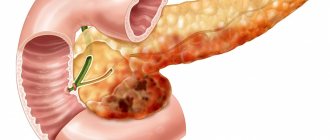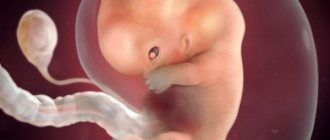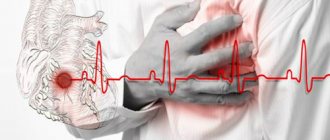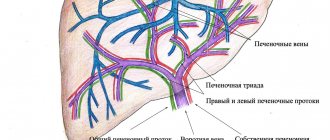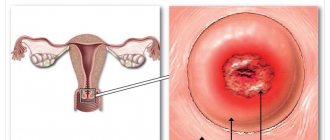The disease is a common pathology and requires immediate surgical intervention. Surgery to remove the appendix is considered safe and does not affect subsequent health. Surgeons warn that ignoring primary symptoms and prolonged refusal to hospitalize causes the development of complications, including peritonitis. In the latter case, the risk of death increases.
Causes of appendicitis
The exact reasons for the development of the inflammatory process are still unclear. But there are several common options:
- Disturbance in the balance of microflora - bacteria that are safe in a normal environment become toxic and cause inflammation.
- Vasospasm causes deterioration in tissue nutrition. Some areas die and become a source of infection.
- Stagnation in the intestines - feces, foreign bodies, neoplasms or parasites can close the lumen of the appendix. At the site of closure, mucus accumulates, where the microbiome begins to multiply. Narrowing and compression of the appendix disrupts blood circulation and lymph flow, which leads to rapid progression of inflammation and necrosis of appendix tissue.
A predisposing factor will be frequent constipation, which forms fecal stones.
Advantages of performing an appendectomy at Euromed Clinic:
- Euromed Clinic is a full-service clinic. Before the operation, if necessary, we will arrange for you consultations with a therapist, cardiologist and any other specialist;
- Our own laboratory allows you to take the necessary tests at once and quickly get results;
- all surgeons at Euromed Clinic are experienced and qualified specialists;
- the operating room is equipped with modern medical equipment;
- use of the latest generation of anesthesia;
- own hospital with modern comfortable rooms;
- experienced surgeons at the clinic use the most modern dressing and suture materials and disposable instruments;
- All reusable metal instruments undergo a three-stage sterilization system and are then placed in vacuum packaging to ensure the sterility of the instrument.
You can make an appointment at a convenient time with a surgeon at Euromed Clinic by calling + 7 812 327 03 01 or online.
Symptoms of appendicitis
The appendix is located in the lower abdomen. The first symptom is unbearable pain that appears in the navel area and spreads to the lower right side of the abdomen. The pain worsens over a short period of time when moving, taking a deep breath, coughing or sneezing.
Other typical symptoms:
- nausea, even vomiting
- decreased or complete lack of appetite
- constipation or, conversely, diarrhea
- flatulence, painful bloating
- fever, chills, symptoms of intoxication
- urge to defecate
Signs of inflammation of the appendix may differ in men and women. For example, women experience nausea, vomiting and fever. At the beginning of the development of the disease, the pain is pressing, pulling, and not even necessarily on the right side, which can be mistakenly recognized as gynecological problems.
Then the pain may become cramping, such symptoms most often occur in the evening or at night.
In men with acute inflammation, severe pain in the abdominal area and spontaneous tightening of the right testicle occur. When the scrotum is pulled back, discomfort and pain occur in the anal area and a strong urge to have a bowel movement.
In older people, the symptoms of appendicitis may appear less clearly: minor pain, mild nausea. At the same time, appendicitis in older people is often characterized by a severe course and the development of complications.
In children under 5 years of age, the symptoms of appendicitis are not as pronounced as in adults. The pain often has no clear localization. Appendicitis in a small child can be recognized by increased body temperature, diarrhea and the presence of plaque on the tongue.
Bibliography
- Barsukova, I.M. Acute appendicitis: history and modern organization of medical care// I.M. Barsukova, M.V. Gavshchuk, A.P. Krivov. - text: direct // Scientific notes of St. Petersburg State Medical University named after. I. P. Pavlova, 2021.- No. 3 – P. 43-49, DOI: 10.24884/1607-4181-2018-25-3-43-49.
- Clinical guidelines “Acute appendicitis in adults”, 2021, Developers: All-Russian public association “Russian Society of Surgeons”, All-Russian public organization “Russian Society of Endoscopic Surgeons”. - Text: electronic. - URL: (access date: 09/29/2021).
- Draft clinical guidelines “Acute appendicitis in children”, 2016. Developer: Russian Association of Pediatric Surgeons, -Text: electronic.- URL: (access date: 09.29.2021).
Author:
Pugonina Tatyana Alekseevna, Therapist
Types of pathology
Acute appendicitis develops rapidly and manifests itself with pronounced symptoms. With inaction, the pain intensifies and inflammation can lead to serious complications.
By its nature, acute appendicitis can be complicated or uncomplicated. Uncomplicated pathology, in turn, has 2 forms: catarrhal (only the mucous membrane is inflamed), destructive (deeper layers are affected).
Chronic is a fairly rare form. In most cases, it develops as a result of acute appendicitis in the absence of treatment. Has the same symptoms, but they manifest themselves very sluggishly. There are periods of exacerbation and remission, like any chronic disease.
Chronic appendicitis is also divided into subtypes:
- Residual - a consequence of acute appendicitis that ended in self-healing. It manifests itself as a dull aching pain in the right iliac region.
- Recurrent – has a paroxysmal nature: exacerbations occur from time to time, followed by remission.
- Primary chronic – develops independently, without preceding acute appendicitis.
Recovery after laparoscopic appendectomy
After appendectomy using the laparoscopic method, restoration of work capacity and return to a normal lifestyle occurs faster. As a rule, after 1–2 days the patient is discharged from the hospital. After the operation, the surgeon will prescribe antibacterial therapy and give recommendations on diet and physical therapy to quickly restore the body.
At Euromed Clinic, surgeons perform both open and laparoscopic appendectomies.
Diagnosis of appendicitis
The first step in examining a patient is an examination and history taking. The doctor asks you to tell us when the symptoms began and how long the discomfort lasts. This is important to understand in order to distinguish the disease from something else.
It is important to consider other factors that could cause the development of appendicitis:
- Surgical operations in the abdominal area in the recent past.
- Taking medications or supplements.
- Bad habits, abuse of alcohol, drugs, etc.
Feeling the abdomen will help determine the location and intensity of pain, its characteristics. A pelvic and rectal examination may be necessary. The final diagnosis is made only after laboratory tests. Blood and urine tests can help detect signs of inflammation or other health problems.
Visual examination methods may also be required - ultrasound of the abdominal organs, CT or MRI. They will allow:
- determine the condition of the appendix and assess its integrity
- detect signs of inflammation
- evaluate blockage inside the appendix
- identify an abscess or other complications
Why is it needed?
The appendix is important. This is not just a shoot that we received as a gift from evolution. Normally, the appendix performs an immune function. It belongs to the organs of the immune system and therefore is always the first to suffer from inflammatory processes in the abdomen.
In addition to its immune function, this small appendix is a receptacle for intestinal microflora; digested food never enters it. This makes it possible for the entire intestinal microbiota to grow and develop in it, which is involved in the processes of protecting the intestines from pathogenic microorganisms and in the digestion process.
There is evidence that it is from the appendix that the intestinal microflora “comes out” and is restored after intestinal infections. Even 30-40 years ago, sailors who went on long voyages had their appendix removed so that it would not become inflamed at sea, away from medical care. Since then, it has been observed that people with their appendix removed are more likely to suffer from intestinal illnesses, have a reduced immune response, and take longer to recover from intestinal illnesses.
Research is currently underway on the effect of intestinal microflora not only on the immune system, but also on the brain. We have already talked about this.
How to treat appendicitis?
The pathology requires immediate treatment, since the appendage may burst and its contents will spill into the abdominal cavity and peritonitis will begin. Therefore, the only solution is to remove the appendix surgically.
Appendectomy is a surgical operation to remove the appendix. It can be carried out in two ways:
- classic – abdominal surgery
- laparoscopic, when there are no large incisions
Abdominal surgery is performed if the appendix ruptures and if its contents spill into the abdominal cavity, as well as if the rupture causes an abscess.
Laparoscopy is considered the most modern method of removing the appendix for various reasons: less invasiveness, quick recovery, and fewer complications.
The operation is carried out as follows:
- the surgeon makes small incisions through which access to the appendix appears
- a camera with illumination is introduced
- other instruments are used to remove the process
- areas are treated to disinfect infectious material
- the operated area is examined and sutures are placed
Contraindications for laparoscopic appendectomy:
- late stages of pregnancy;
- severe blood clotting disorders;/li>
- undergone operations on the abdominal organs;/li>
- severe cardiovascular and respiratory failure;/li>
- abnormal location of the appendix;/li>
- old age;/li>
- pronounced adhesive process;/li>
- widespread peritonitis requiring sanitation and drainage of the abdominal cavity;/li>
- dense appendicular infiltrate;/li>
- gangrenous appendicitis./li>
Pain syndrome in atypical forms of the disease
Features of the anatomical variants of the location of the appendicular process determine why in a significant number of patients the pain syndrome is atypical in localization and manifestation.
The red arrow shows the pelvic localization and the possibility of fusion with the genital organs
Retrocecal location (behind the cecum) is the most common (32% of cases) after descending (63%). Since the process is adjacent to the liver, lumbar muscles, and right kidney, the disease takes on the mask of other pathologies. Usually the pain begins in the epigastrium, then moves to the right side or lower back.
Difficulties arise in identifying even destructive forms of inflammation. There are no symptoms of peritoneal irritation. Sometimes tension in the lower back muscles is detected. The positive Obraztsov symptom helps in diagnosis—increased pain when lifting the right leg.
With pelvic localization, the appendage comes into contact with the intestines (sigmoid and rectum), bladder, and uterine appendages in women. Painful manifestations become similar to colitic ones - cramping.
If it hurts in the left iliac zone, it occurs due to inflammation and spasm of the lower parts of the large intestine. Initially, the attack is localized in the epigastrium, then moves to the groin or to the area above the pubis. Tension of the peritoneal muscles is often absent. In such cases, appendicitis can be suspected only through a rectal examination; women are examined by a gynecologist.
Subhepatic localization is rare, but has significant diagnostic difficulties. It is difficult to distinguish which pains are caused by the atypical location of the appendix and which are caused by inflammation of the gallbladder.
The center of pain when the appendix is located subhepatically is in the hypochondrium on the right; pain on palpation of the abdomen is also determined here
In order not to endanger the patient’s health in surgery, it is customary to treat appendicitis or cholecystitis conservatively for 24 hours. If the pain does not disappear, operate; the diagnosis will be made only during the operation.

